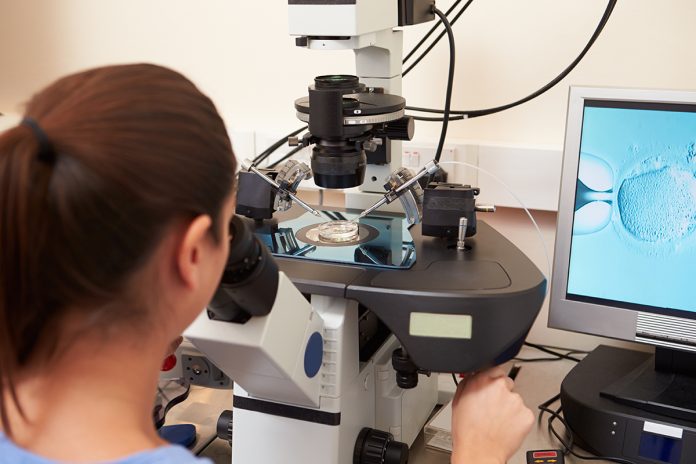Professor Darren Griffin reflects on how patients in fertility clinics should interpret the scientific evidence base when even the experts can’t seem to agree
Reproductive medicine is odd. It is one of the few occasions where patients have radical therapies with an intention other than benefiting their own health. There are few areas where the success of a procedure is so dependent on barely perceptible “good gardening” skills such as embryo manipulation. There are few areas where so many different academic disciplines combine (medicine, anatomy, physiology, endocrinology, cell biology, genetics, biochemistry, endocrinology, physics, engineering…).
It is the only medical discipline where the physiologies of two individuals combine (even if the two parties do not meet) for the purpose of producing a third (or more). It is undeniable some centres are better than others in terms of their success rates. The question then arises, at what stage do we consider the medical evidence robust enough to introduce a new and innovative therapy into a clinic?
New treatments to improve IVF success
The development of new treatments to improve IVF success has a chequered history. There are many, but those with at least some robust published evidence base in respected scientific journals include:
- Assisted hatching.
- Elective freeze all cycles.
- Endometrial scratching.
- Intrauterine culture.
- Physiological intracytoplasmic sperm injection (PICSI).
- Pre-implantation genetic testing for aneuploidy (PGT-A).
- Reproductive immunology tests and treatment.
- Time-lapse imaging.
- Sperm DNA damage testing.
To some, these are radical innovations at the cutting edge of reproductive medicine. To others, they are simply “add-ons.” For the purposes of this article, to avoid emotive connotations I will refer to them with the neutral term “adjunct treatments.”
One view is that a new therapy should only be introduced into the clinic after at least one randomised controlled clinical trial (RCT). Until then, any treatment should be considered “experimental” and only part of a trial. Given that this is standard for many other areas of medicine (infectious disease, cancer, etc.) then should it not be the same for reproductive medicine? One of the problems with this model is that a trial can rarely have a placebo arm. The second is that the skill of the operator (or lack of it) can potentially negate any benefit of the treatment. A third is “blinding,” it’s hard to imagine that a lab performing the complex micromanipulation procedures doesn’t know they’re doing it. It is for this reason that I contend that results from single centres (e.g. retrospective analyses) may be just as useful to the big picture as RCTs. Indeed, both RCTs and meta-analyses could possibly mask the particularly bad (or good) practice by individual clinics.
Efficacy of adjunct treatments
Concerning the efficacy of adjunct treatments, therefore, there are many opposing views, but two possible extremes might be expressed thus:
- Adjunct treatments are not properly validated. We must always wait for the results of RCTs before introducing a new technology because clinics are motivated by the need to be seen to be innovating. A driving force is the money associated with charging patients for “the latest” therapy, despite the proper supporting evidence and it is unethical and unfair to patients to subject patients to such treatments unless the case is proven (by RCT).
- There is sufficient evidence. In reproductive medicine, we cannot always wait for RCTs because clinics (especially private clinics) depend, for their survival, on their ability to innovate quickly. Innovation is good, clinics that do not do this typically have low success rates, and basic techniques such as IVF and intracytoplasmic sperm injection (ICSI) would never have been introduced if subject to the prior rigours of an RCT.
When RCTs are designed, they can take years, they are poorly funded (unlike drug trials), the benefits of the treatment may already be obvious and the appetite to perform the trial may have waned.
The HFEA recently introduced a “traffic light” system, intended to inform patients in a simplistic way how effective each of the above adjunct treatments are.
- A red light is awarded for where there is “no evidence” to show that this adjunct treatment can improve live birth rates, or where there is evidence that it is unsafe.
- An amber light is awarded where there is conflicting evidence to show that the adjunct treatment can improve live birth rates, or that it is safe for patients to use.
- A green light is awarded where there is more than one good quality RCT that shows the procedure is effective at improving live birth rates and safety. Notably “These treatment add-ons may be routinely used in fertility treatments therefore will not be included in this review list.”
I have some issues with this last line because this means that no green light will ever be awarded. If the treatment becomes routine, then it does not make the list.
Further issues with this system
I contend that there are further issues with this system. A closer inspection reveals that the strict definition used for live birth rate is “cumulative pregnancy rate (CPR).” In other words, do the patients get pregnant eventually if they keep trying? In effect, any approach designed to select the embryo most likely to implant cannot be shown to be effective by this definition. It is important to note that CPR is not the patients’ only motivation. They are mindful of the time it takes to get pregnant (the longer they are being treated, the more stressful and expensive it becomes) and about the risk of miscarriage. Measuring CPR alone does not take this into account. Moreover, the use of the phrase “there is no evidence” is emotionally charged. Indeed, some specialists have expressed the view that there is no evidence that will convince them. In reality, none of these treatments would be on the list if there were “no evidence.” The HFEA states that the only evidence that it will consider is an RCT, and most of these treatments are licensed for use by them. I contend that to license a treatment, yet not to consider awarding it a green light does not give a good impression.
RCTs: The gold standard for clinical evidence
Despite this, I contend that RCTs remain the gold standard for clinical evidence. Nonetheless, I ask patients, the scientific community and the HFEA to consider that just because it is an RCT, does not necessarily mean it is a good study, especially if badly executed. Equally, just because it is not an RCT does not necessarily mean that it should be disregarded. We need to consider that patients not only want to see evidence of the efficacy of the treatment overall but also how good a particular clinic is at performing it. We, therefore, need to consider the balance of the evidence base, RCTs and more.
As a parting shot, I ask you to consider this: There is a consequence of not implementing adjunct treatments or erecting barriers to make their implementation near impossible. Consider the patient that could, and would, have chosen to take (and benefit from) an adjunct treatment, had it been offered.
*Please note: This is a commercial profile











